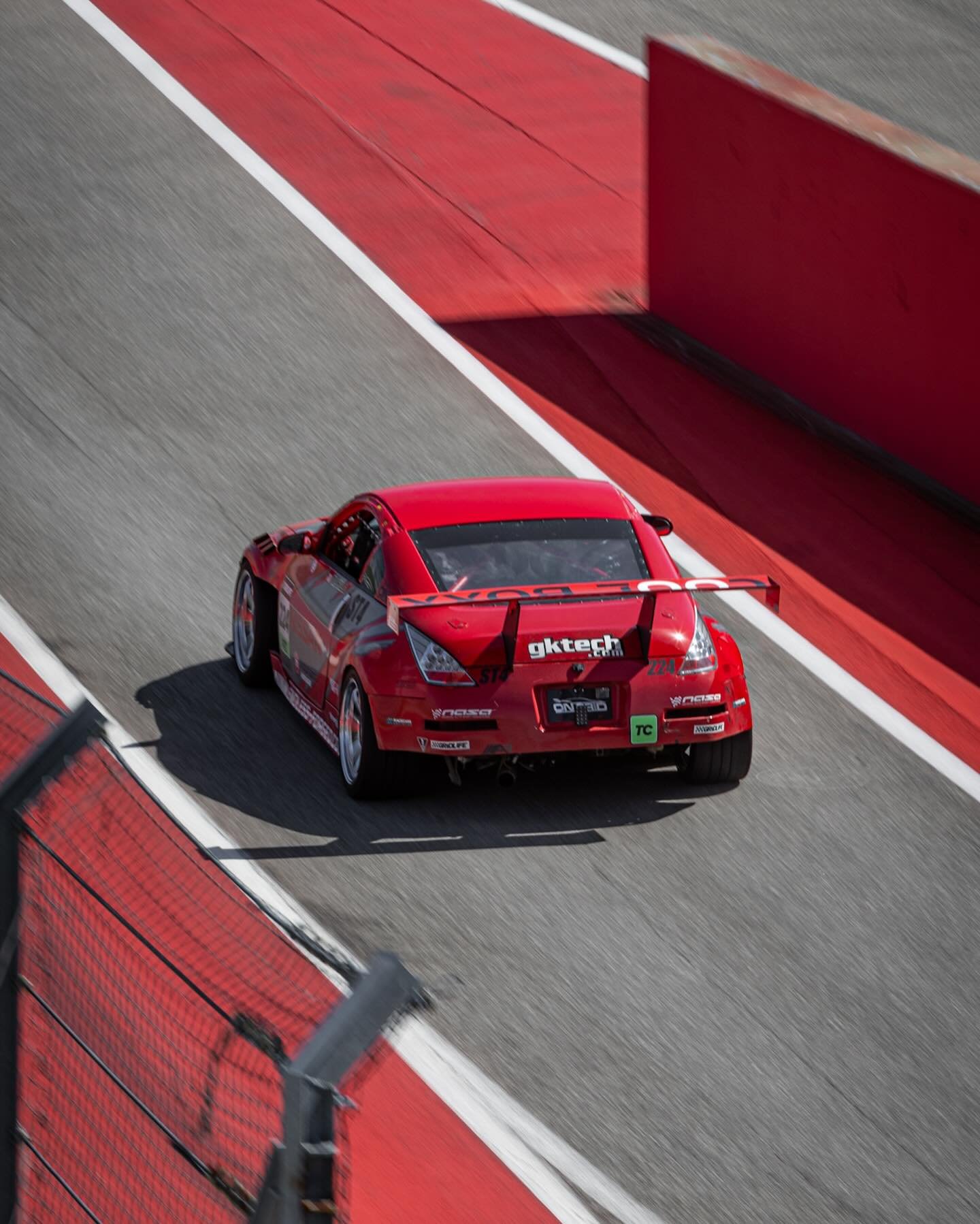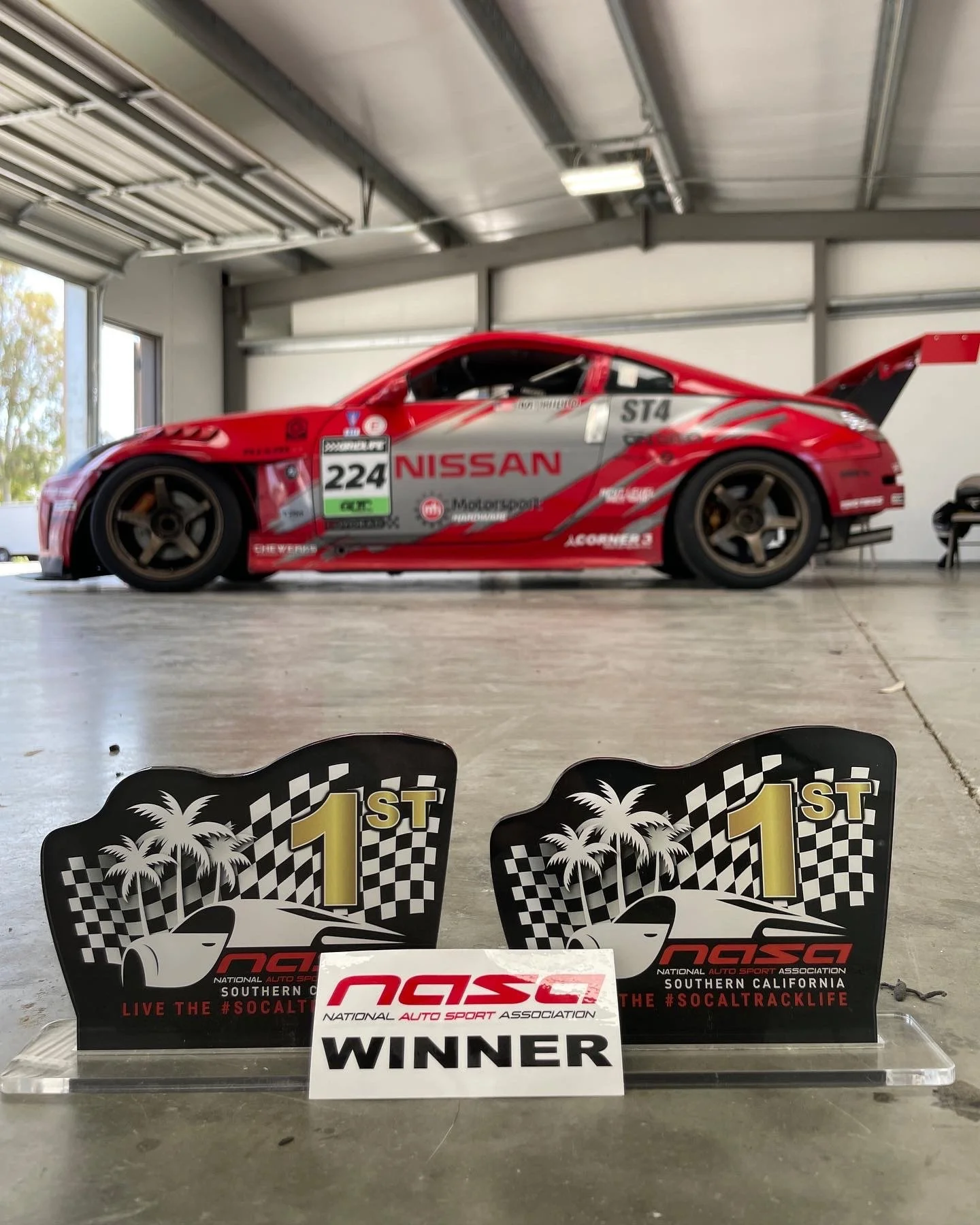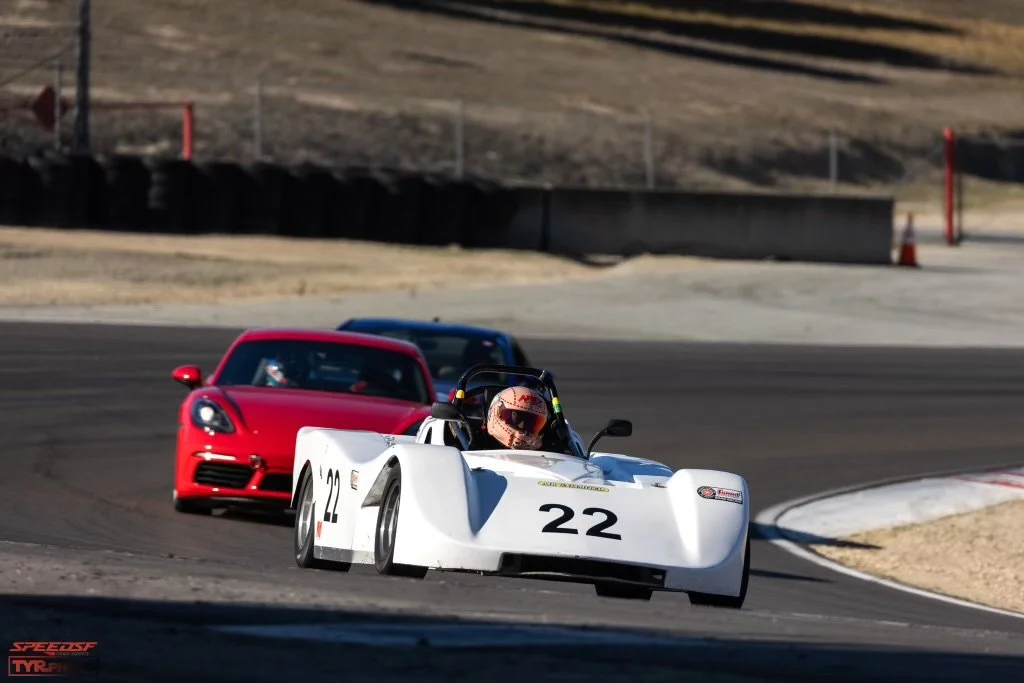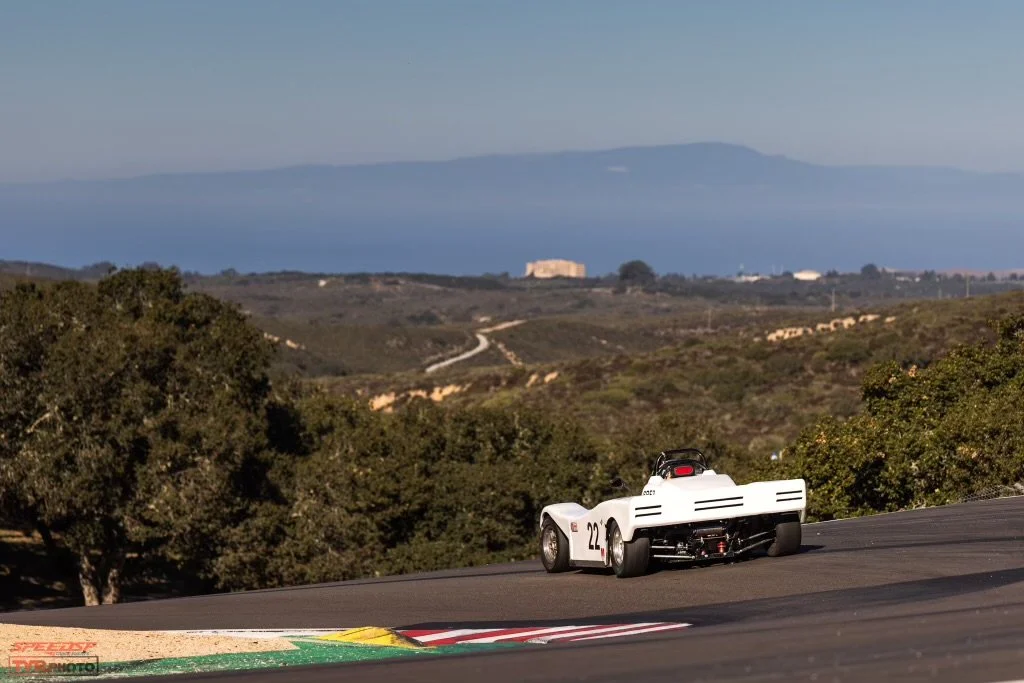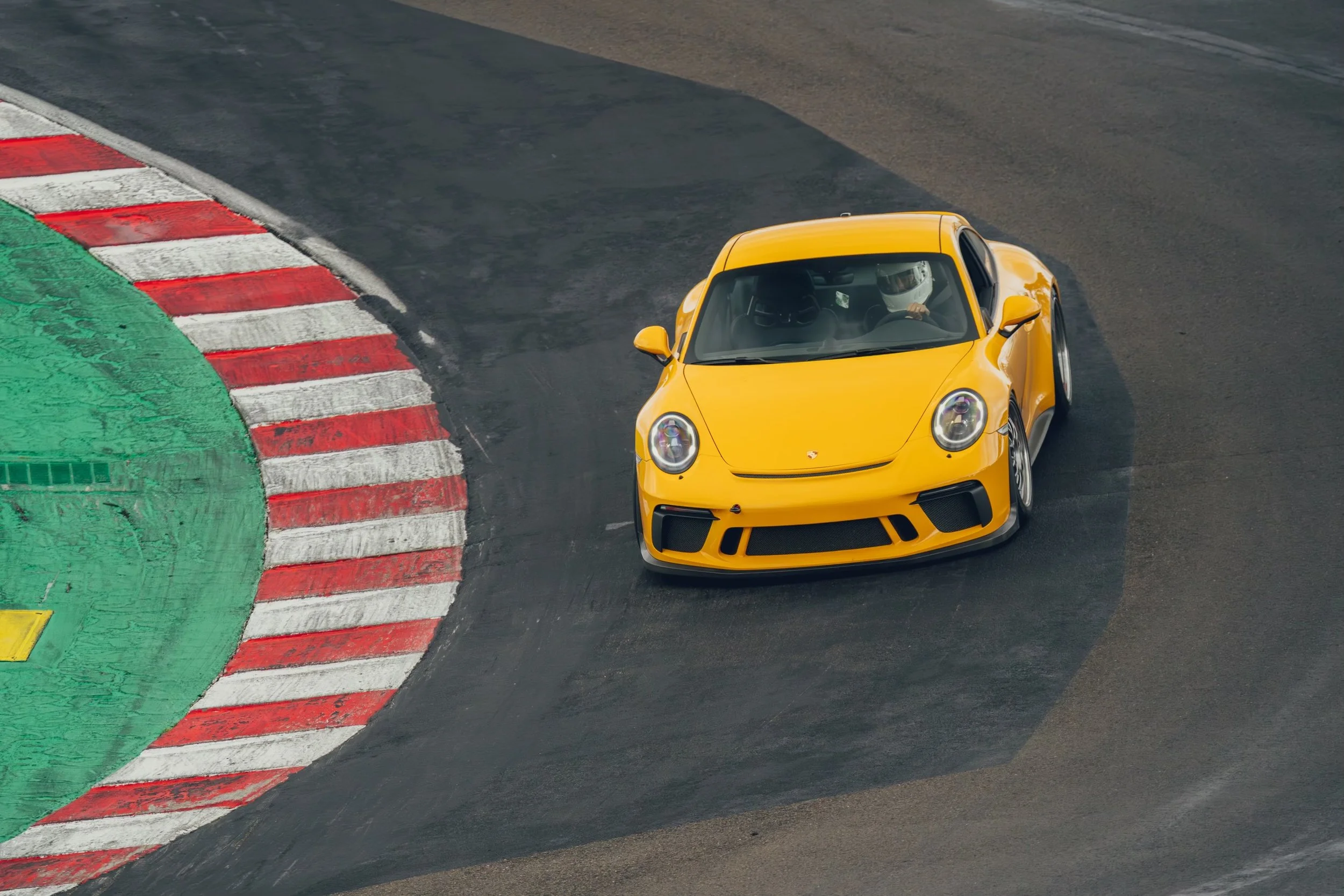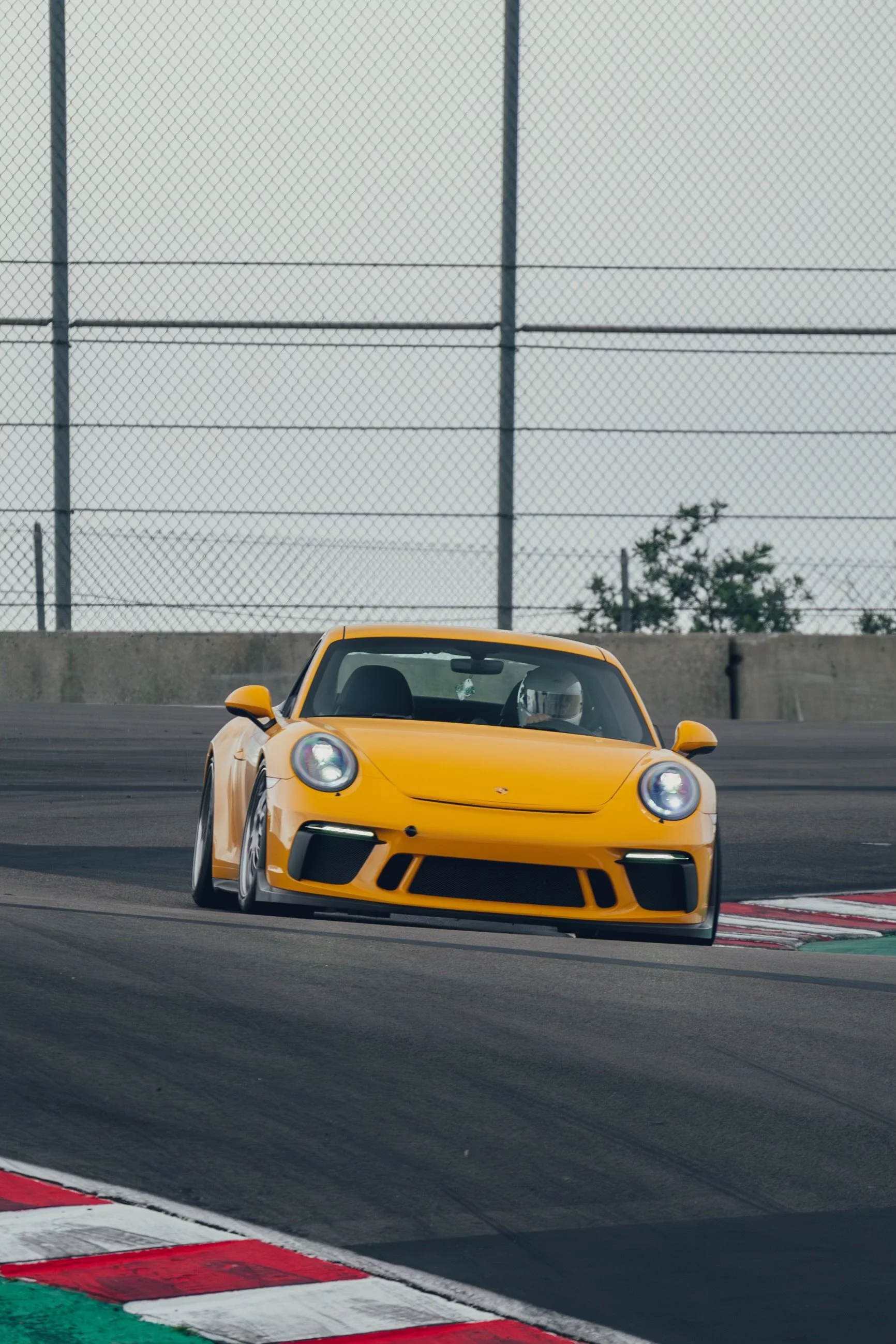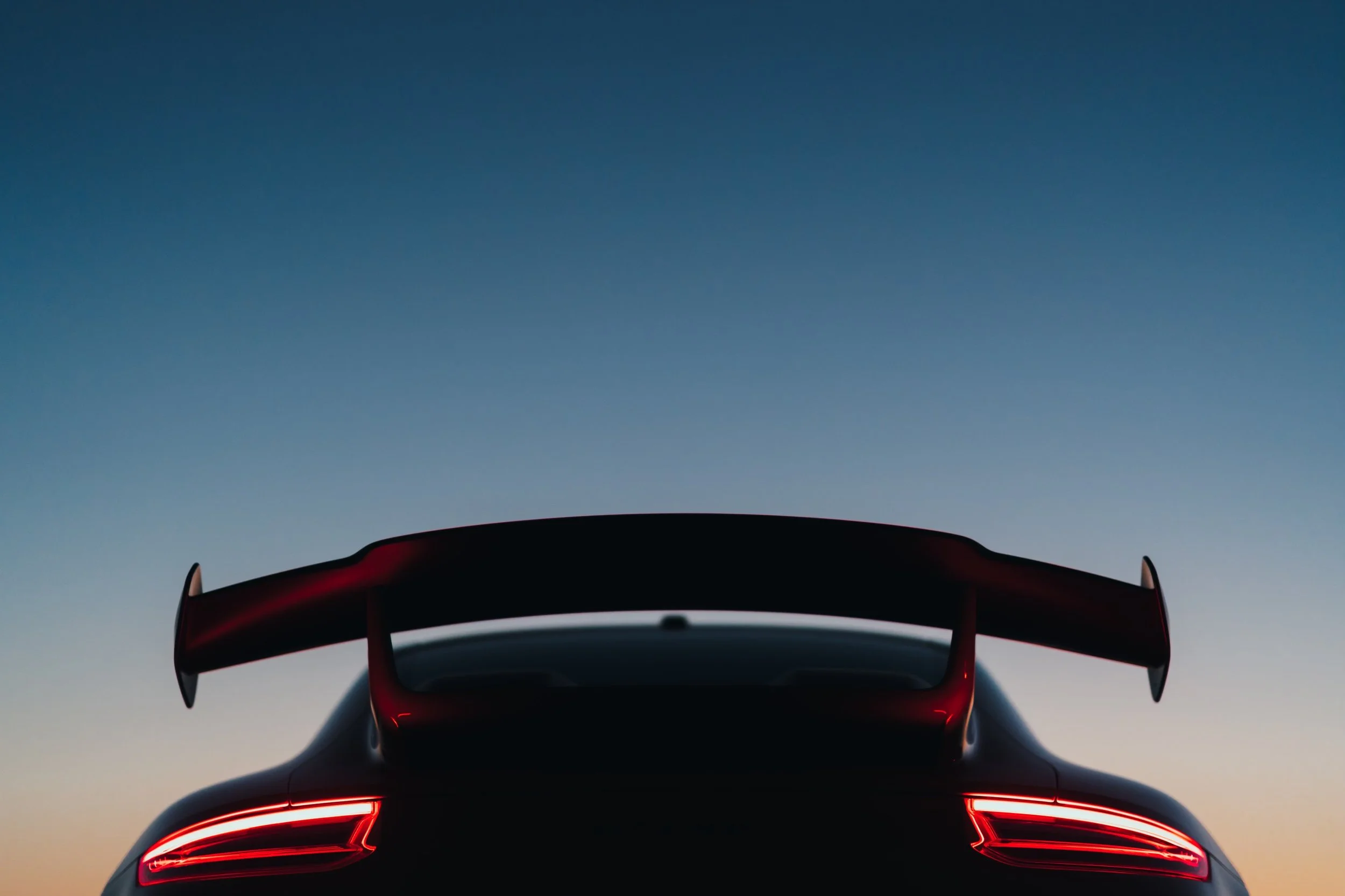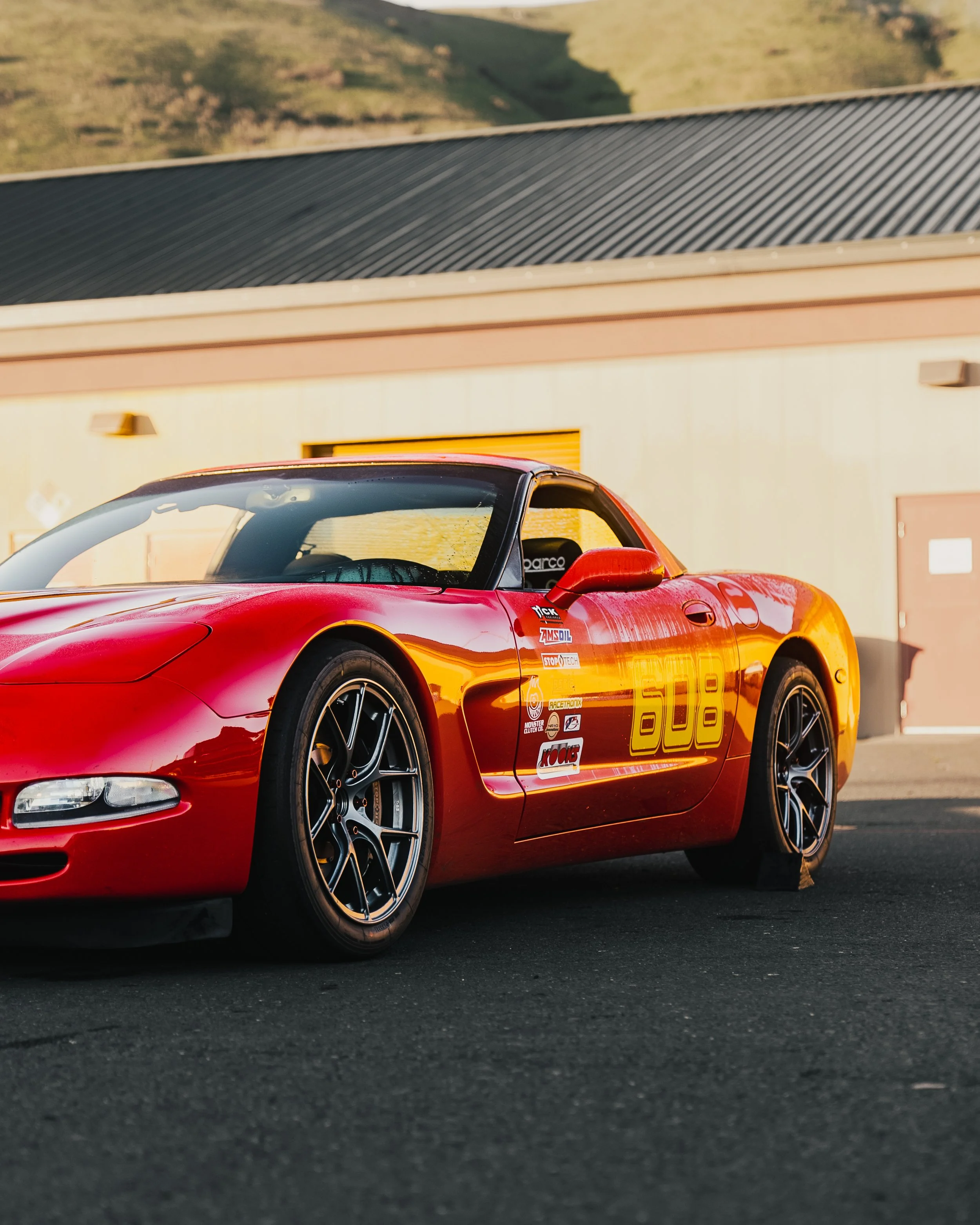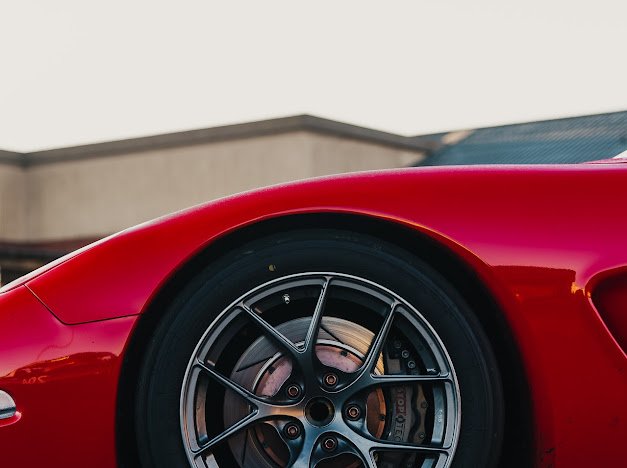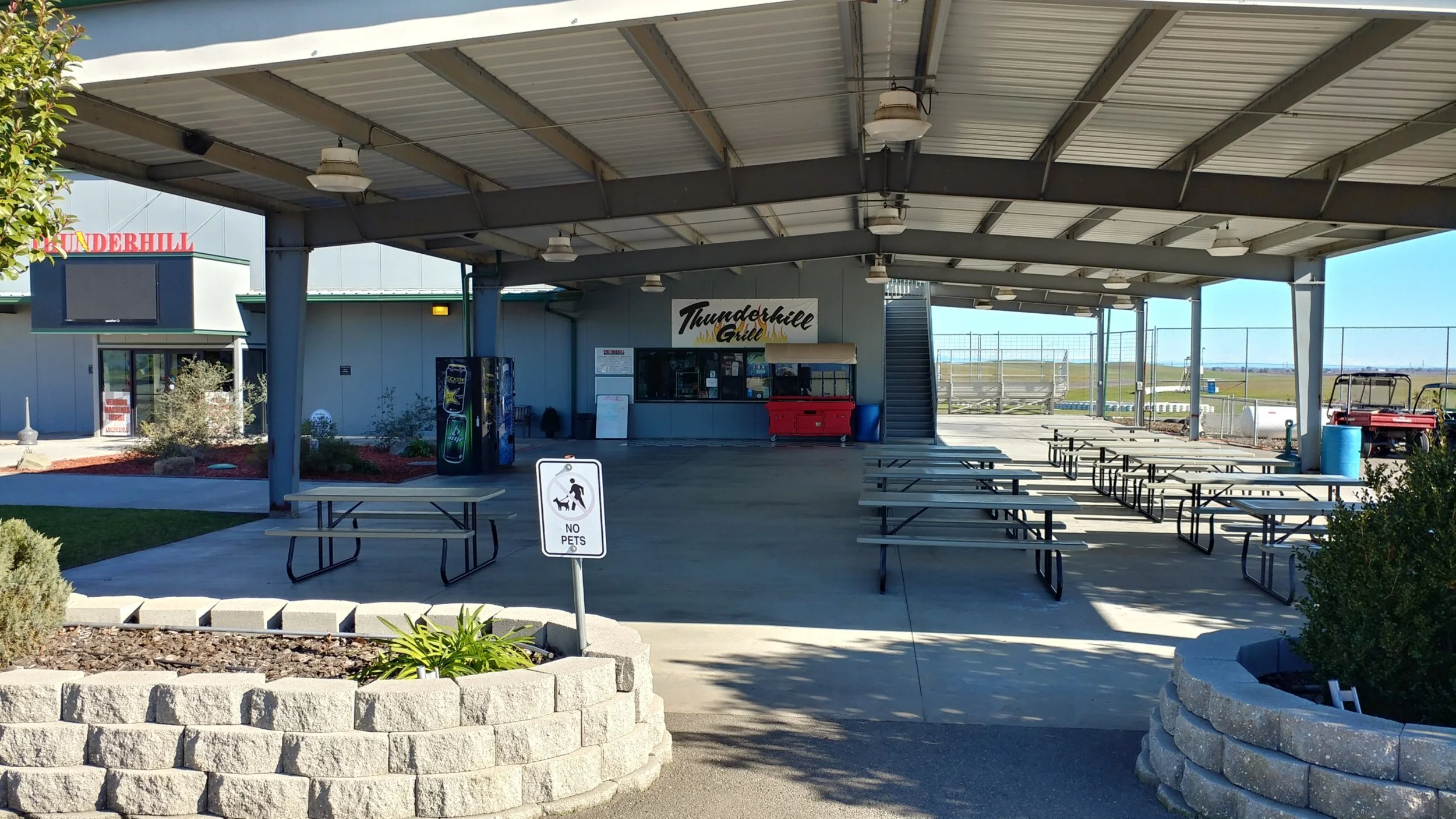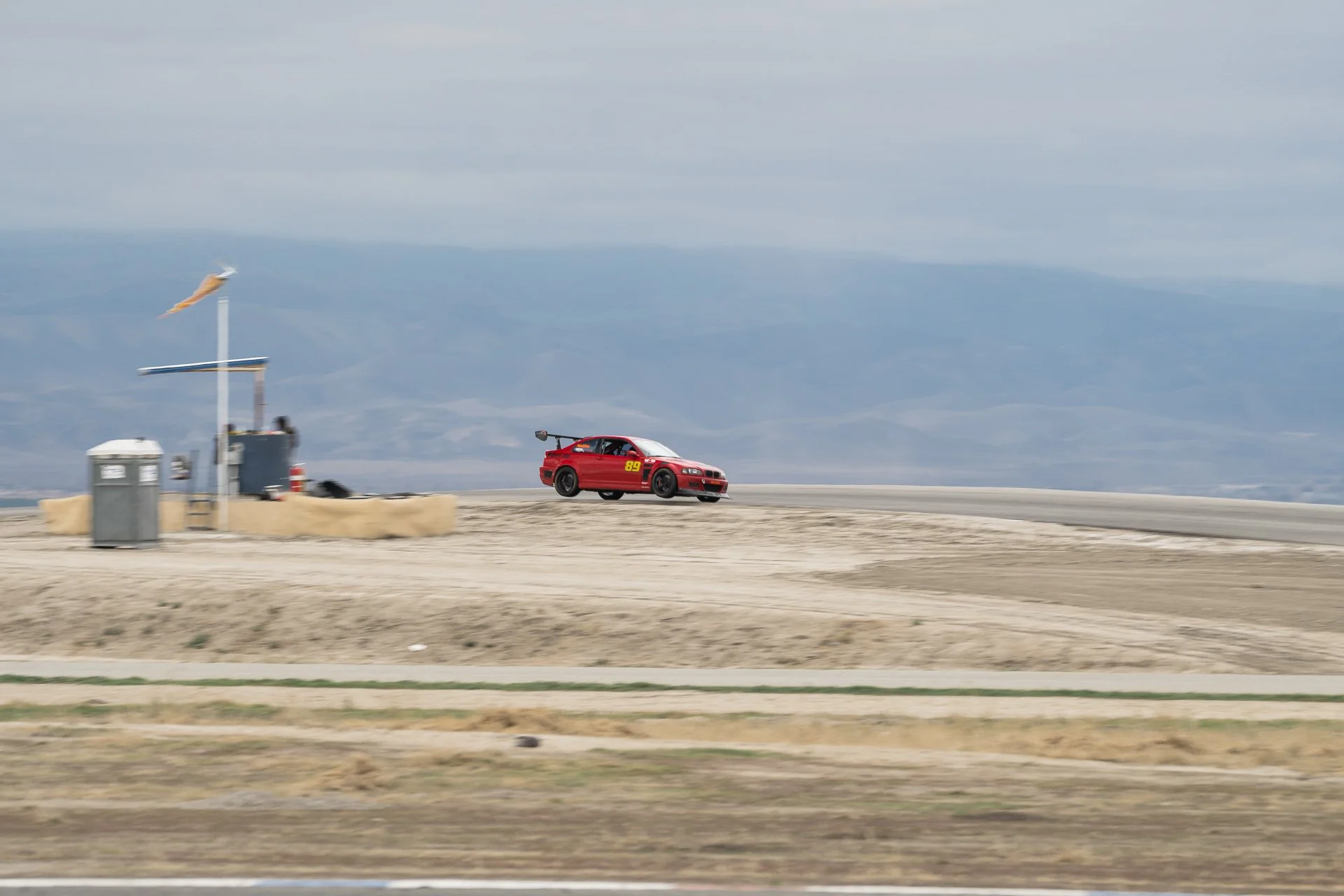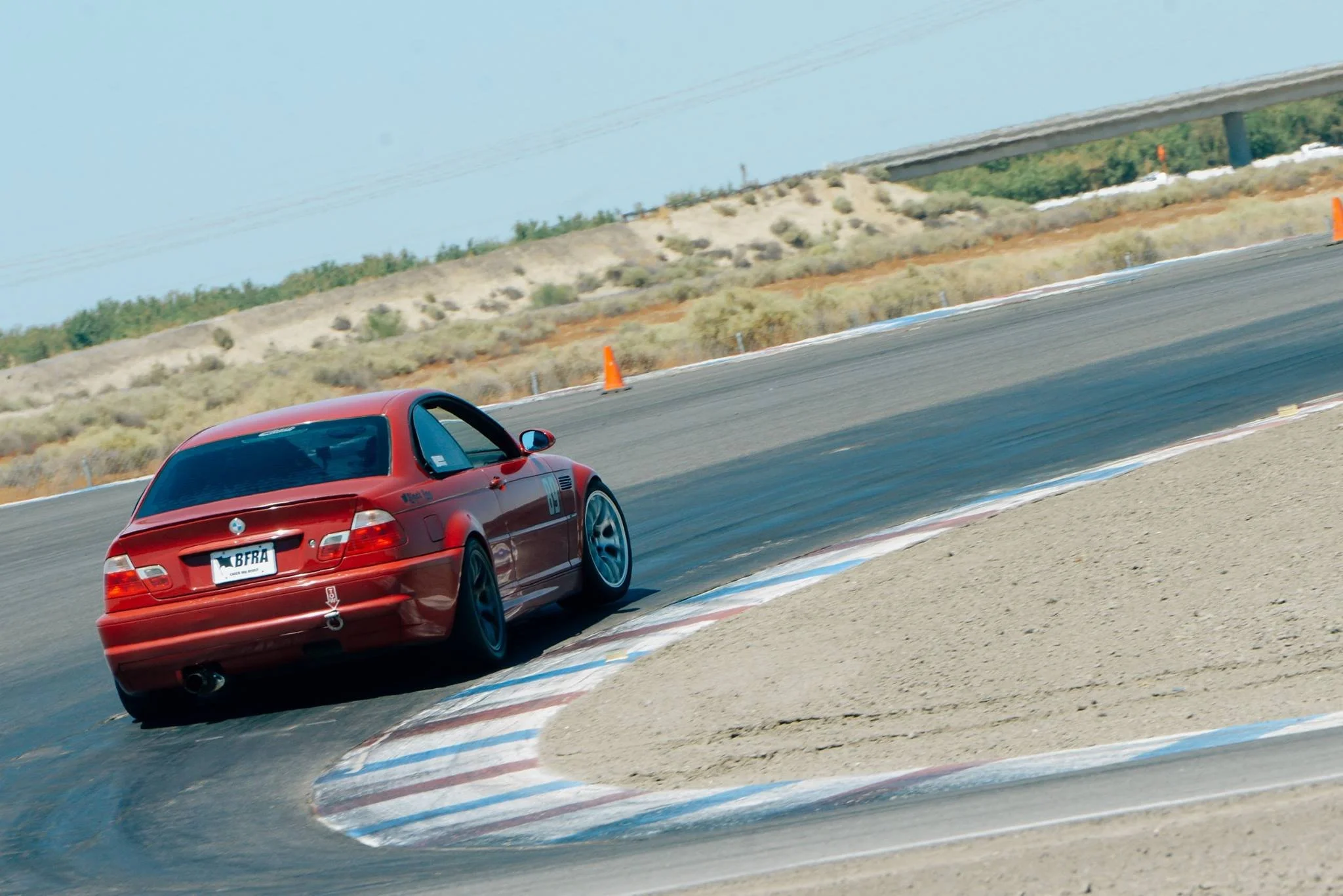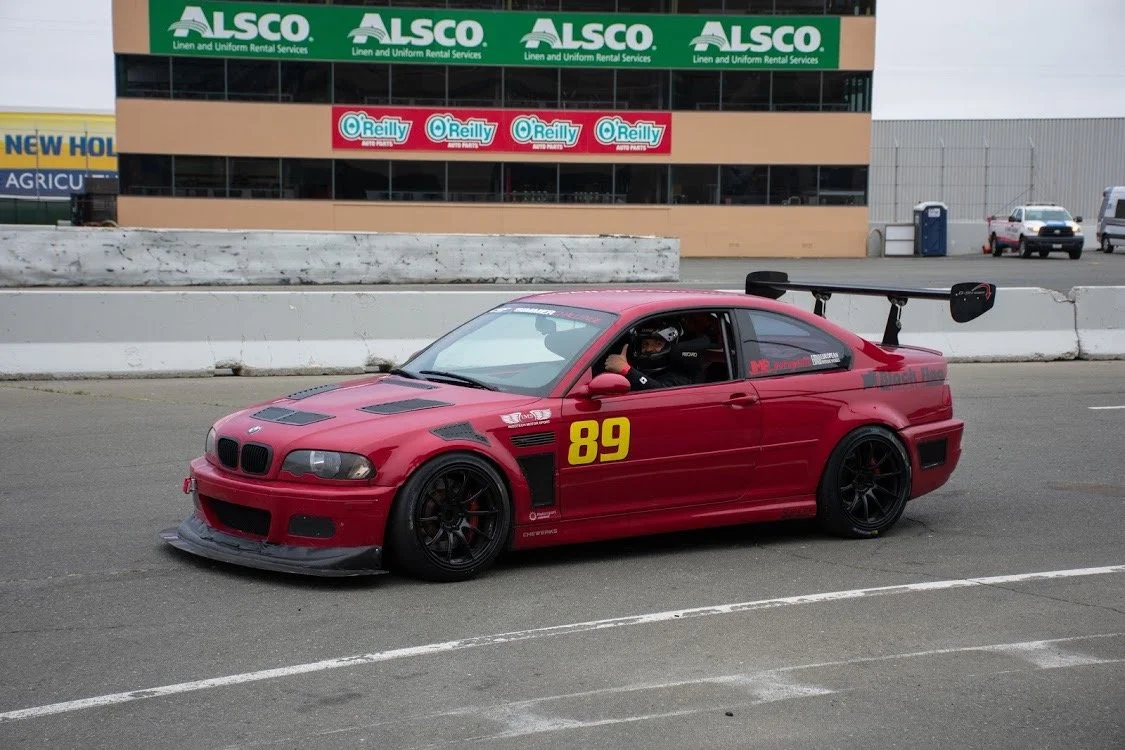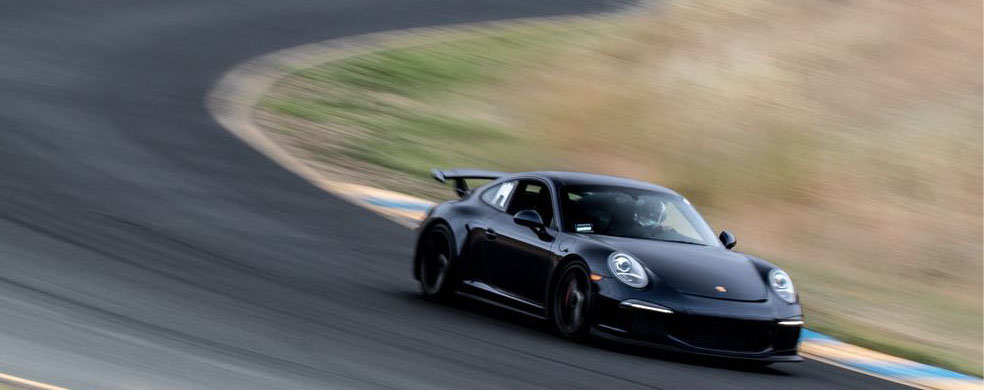
Michael’s 350Z: Take A Chance, Prove a Point
Looking for an affordable drift car, Michael “Stubz” Stillo grabbed a 350Z and started driving sideways. After some time, he recognized the car had potential as a track car -- as long as he could accept a few shortcomings.
Twelve years with an unloved chassis has given Michael “Stubz” Hillo a unique perspective on taking the underdog route. There are other established, well-paved paths with minimal maintenance and certain outcomes, but they don’t offer a maverick a chance to prove a point.
Stubz took it upon himself to take the unloved 350Z and make it into a NASA ST4 race-winner because, well, he hated the idea of conforming. However, before he started his mission, he was after an affordable way to begin drifting. Nowadays, the 350Z is one of the few Japanese sports coupes that offers the sort of value the budget drifters offered back in drifting’s heyday. Even then, it was pretty cheap.
It was more than just an option for the cost-conscious drifter, as Stubz realized. Beyond low overhead, a torquey motor, and a rear-drive layout, the Z has a lot going for it. It’s reasonably stiff, the aerodynamics aren’t terrible, and the aftermarket is decently sized. It might not be as well supported as the E46 M3, but it offers similar power-to-weight figures and the potential to run respectable lap times at a fraction of the price.
The zeal and the commitment to proving the platform came later — at first, it was cheap fun. Beating up on pricier cars was only part of the pleasure; the steering was full of feel and responsive, the motor responded well to modifications, and the rear end put the power down decently.
Some of that luster began to fade when he tried to turn the Z into something more than a midfield car. The budget modifications no longer seemed to be enough, and so he tried experimenting with the high-end brands which only offered limited support for the Z.
After testing Penske and Godspeed coilovers, he settled on MCS two-ways with 18K springs up front and 9K in the rear. The car still lacks some of the compliance he’d like in slower corners, but it works well enough in the fast sections, thanks in part to Epsilon+ aero, that the compromise is acceptable.
The most irritation has stemmed from the car’s flawed braking system. Persistent knockback issues and lousy OEM ABS pushed Stubz into spending hundreds of hours diagnosing and attempting to find a package that would work.
Plenty of thrown wrenches and a thousand curse words later, he found a set of Stoptech Trophy big brakes that did a reasonable job. Because they moved the brake calipers closer to three o’clock, they mitigated some of the knockback resulting from the steering knuckle flexing. The remaining bugbear was the ABS system, which needed to be retrofitted with the Bosch Mk60 kit from Race Harness Technologies.
Though the braking system works decently these days, Stubz isn’t completely satisfied. Trailbraking has improved, but the outright braking performance hasn’t gotten much better. However, some of that has to do with the weight of the vehicle, which has been hard to lose with conventional stripping methods. “You’ve gotta get pretty creative when it comes to putting the car on a diet. I didn’t want to, but I had to buy carbon. Hatch, hood, front bumper, and headlight blanks from Spinnaker Composites have helped, but the car is still heavy.” he explains.
It’s transformed into a reasonably swift car in recent years, even with the diminishing returns from spending big bucks on primo parts. The 3,200-pound Z has an average of 257 horsepower which is pretty well administered thanks to 275-section Toyo RRs and the aforementioned aero. A broad powerband helps make the car less track-sensitive than some, and, anyways, Stubz no longer agonizes over finding the perfect setup. After several years of head scratching, he sees the Z as a dependable, safe, and sturdy car which is easy to run and satisfying to drive. Going for the gold isn’t his aim any longer — he’s happy with what the 350Z’s speed. Any car that can lap Buttonwillow W13CW in 1:54 is more than just fun — it’s seriously fast.
Striving to perfect the car sapped some of his ambition, but it’s also given him a few notable wins, wisdom, and a pragmatic approach that provides him with peace of mind. His lack of zeal might not motivate newcomers to try and beat the odds, but if they read between the lines, they should realize that there’s nothing with the Z as an entry/mid-level car. It might not carry an ambitious driver to the top of the podium, but its golden era-pricing lowers the barrier to entry. It’ll help them get involved faster — and in Stubz’s view, that’s better than sitting on the sidelines and dreaming of victory.
Max’s Spec Racer Ford: Lose The Ego
After cutting his teeth in a Porsche, Max got an inkling that going to a lighter, cheaper, more expendable device might expedite his improvement as a driver and budding racer.
After Max Gokhman signed for his 2006 Cayman, his dealer insisted that he take the car to the track. “You won’t be able to fully appreciate it if you don’t,” he said. Max was hesitant — the thought of balling up his brand new Porsche terrified him, but, at the same time, he sensed the man knew what he was talking about.
Max continued to mull over the prospect of tracking his new toy, but his dealer was adamant — so much so he offered to pay Max’s entry fee. That was all Max needed to make a decision. The next weekend, he took the Cayman to Infineon Raceway and began a love affair that never tested his patience. No crashes, no major repairs, and a relatively straightforward relationship with his parts suppliers made his first few years in grassroots motorsports a breeze.
Soft Ascent
After becoming the 2014 PCA Autocross Class Champion and multiple podium-sitter in various Southern California time attack series, he sold the 987 and moved into a 2014 981 Cayman. This time, however, he wasn’t as eager to modify the car. He’d come to understand the practical shortcomings of a track-oriented car and felt he might get more from the ownership experience if he was to leave the car mostly stock.
It was around then that one of his track buddies enticed him into wheel-to-wheel racing. This would entail buying a race-only machine. Truth be told, he had considered it for some time, but the thought of wadding up a Porsche racing car turned his stomach. Even getting on track in one would be prohibitively expensive, so he explored the cheaper options available to him.
He could drive a Spec Miata for a reasonable price, but he wanted something a little different. “I was looking for a mid-engined, purpose-built platform, and — and this is subjective — something a little more interesting than a Miata,” he explained.
He loved the idea of running a “spec” car: something that encouraged close competition through mechanical parity. What about something with the same power of a Miata, but in a car which weighs one thousand pounds less? The tried-and-true Spec Racer Ford, a staple of grassroots motorsport for the last fifty years, caught his eye. Mid-engine, open-top, closed-wheel, and very cost-effective; there was a lot to like about this diminutive, bare-bones racer.
Barest Bones
The tube-frame chassis has a 1.6-liter engine from a Ford Focus sitting transverse behind the driver. These sealed engines produce 135 horsepower, and are fairly inexpensive to replace when they go bang — though this rarely happens. The emphasis here is on reliability, low running costs, and complete driving immersion.
When Max first tested the car at Laguna Seca, he was setting competitive times by the end of the day.
The sense of occasion is something that can’t be underestimated with an open-top car like this. Not only is the visibility fantastic, but getting your helmet buffeted by the wind makes driving at seventy feel like a hundred and twenty. The information relayed by the car is detailed and constant; it’s easy to feel a locked tire or growing understeer through the steering, which is remarkably sharp. “Feedback is crystal clear,” he adds.
Sitting in the middle of the chassis and knowing exactly where your front wheels are at all times inspires confidence to get real intimate with other racers when going three-wide into a turn - truly what wheel-to-wheel is about.
Some might suspect that a car this visceral and direct would come with sharp edges. In reality, it is predictable and communicative, and, as it has much more grip than power, it’s quite easy to find its limits. When it does slide, it’s fairly progressive — more so than the Cayman; nearly 300 horsepower would cause a few dicey situations when passing in a late-apex turn. Some of this is due to a compliant suspension setup, and some of it is due to the Hoosier slick made specifically for the SRF. Incidentally, it isn’t the most expensive tire. Low weight and low power help lengthen its lifespan, too.
The sequential transmission by Sadev, standard in third-gen SRFs, is another racecar element that Max learned to appreciate. Unlike an H-pattern, which is lovely for canyon drives but saps attention from racecraft; or a PDK, which is clinically precise yet fragile on cars that were built for the street; the SRF gearbox lets you bang out shifts while bouncing off the rev-limiter with abandon.
Perspective Shift
Max admits that, while the Spec Racer Ford is the more engaging car to drive, he doesn’t have the same sentimental attachment to it as he had to his Cayman. “I save the sweet feelings for my Porsche. This is a tool to help me grow as a racer. I compare the distinction between the two to owning a pet versus owning livestock.”
And with the reasonable running costs, packed fields, low power, and full calendars, he’s looking to become a competitive amateur racer as he gets up to speed on the Spec Racer Ford platform, with the help of his team Accel Racetek.
“Once I got competitive with this hobby, I learned that money spent on coaching would make me a lot faster than aero, suspension, or other bits of kit. To me, some of those seem most like things to flex over. With Perry and Travis of Accel Racetek, I not only know that the car will be ready for the next race no matter what tomfoolery I get up to on track, but that they’ll keep nudging me to be a better driver.”
Ultimately, the moral here is that with racing, as with any other passion, dropping your ego — such as by going from a venerable Porsche to a humble Spec Racer Ford — may prove to be the path to success, paved with smiles.
Aidan’s GT3: Vision Realized
Driven to realize a very specific dream built on years of tuning high-revving Hondas, Aidan decided that this 991.2 GT3 would have the subtle cosmetic touches to wow crowds and the high-end racing modifications to set seriously impressive lap times.
Photo credit: @z_stills & @tengerphoto
As Aidan Vo moved through adolescence, his affinity for cars carved out a prominent place for him in the San Jose drag racing scene. After he built an all-motor DC2 Integra capable of twelve-second passes, the big magazines came calling. This was the early 2000s, when the tuning scene was enjoying its biggest boom.
Through some of his drag racing acquaintances, Aidan eventually made the leap into road racing. Following his foray at Thunderhill, he started outlining a list of changes the Integra needed to become a corner carver, and for a moment, it looked like Endless might foot the bill.
So Aidan began disassembling the Integra and shelving the parts which wouldn’t do much good around a road course. Halfway through the teardown, he had a change of heart. He parted the car out, sold the chassis to another racer, and decided to hitch himself to the all-wheel drive wagon that’d just reached American soil.
It was in a Subaru WRX STI that really learned how to turn fast laps. His confidence bolstered by the safe, accommodating four-wheel drive, he earned his spurs in relative comfort. Then he switched camps and built a cost-no-object Evo X, which earned several magazine spots. Not only had he become well known and capable around a road course, he’d been rewarded for expressing his inner vision.
As his income grew, he started searching for a new platform. Something with a little more panache — something German.
The big Audi RS4 might not have been at home on the track, but the fit and finish of a plusher, posher machine did spark his imagination. There was something distinctive about it; something which resonated with Aidan and his appreciation for high style. The jump into the Euro market got his imagination running, but, unfortunately, that would be the extent of his involvement with cars for some time.
After living through the height of the tuner craze and enjoying all that the burgeoning market could offer, Aidan stepped away from cars to focus on his career and his growing family. All throughout this quieter interim, he couldn’t successfully quiet one part of his mind. “I missed that buzz; I had to create and build again,” he reflected.
Ten years of car-free focus had done wonders for his finances. Not completely car-free, however; he spent many evenings over that decade drooling over builds his younger self could never afford. When Aidan decided to return to his old hobby, he brought with him the means to realize a plan he’d held for a decade.
“I’ve always been captivated by the Porsche 911 since the 993 generation,” he began. “It’s always had a clean, restrained, understated design — that’s a big part of my aesthetic.”
A few weeks later, he rolled his new 991.2 GT3 into his garage, parked it, and pictured the finished product in his mind with all his planned modifications. The challenge he’d set for himself was considerable, but he had a clear plan and a few connections to help him along.
The Singer DLS was the one machine which inspired the build. “I’m not a Porsche purist who doesn’t believe in tinkering on their car. I see a Porsche as a vehicle that I can use to promote my vision.”
Knowing that the name Manthey was synonymous with Porsche performance, he did what all GT3 owners with grand aspirations for their build would do: purchase Manthey’s complete suspension, brake, and aero package.
There are only a few GT3s equipped with these parts in the Bay Area, and for good reason — one kit costs as much as a newish economy car. Most struggle to justify spending nearly thirty grand on Manthey-tuned KW dampers, solid bushings, brake lines, pads, dry carbon wing, as well as a Cup car’s front splitter, but the resulting crispness and composure is worth it to those with discerning taste and deep pockets.
Perhaps the one downside was that, for all that money spent, the car didn’t look much different than it did prior to the modifications. With so many Porsches looking so similar, Aidan decided to give a nod to the Porsche styling of yore by replacing the factory GT3 wing with a Porsche Sport Design ducktail. He learned shortly after just how difficult it would be to swap out this piece, retain all functionality, all while using OEM Porsche parts — and only OEM Porsche parts.
A hundred calls to local dealerships resulted in the same sad message: “on indefinite backorder.” It took months of perusing before he found an appropriate ducktail from a local owner looking to return his Sports Design-equipped car to stock, but he finally found the part. With the ducktail in hand, he felt as if the build were gaining a momentum of all its own. “Finding that part gave me the confidence to continue doing things the way I want to do them. Everything happened so organically, it almost felt like destiny.”
It’s subtle, but it sets it apart from the rest of the winged GT3s driving around San Francisco.
Of course, the body and the engine underneath would require several tweaks to accept the new boot-lid. Aidan had to source a 911R intake, 911R engine cover, the hinges, every nut and bolts and the oil return lines to allow this new body panel fit snugly. Unfortunately, What would seem to be a simple swap took months and countless emails.
The tradeoff was obvious. “The ducktail definitely makes less downforce than the original wing, which I learned when trying to go flat over Turn 1 at Laguna Seca, but it helps with rear visibility.”
With used 911-money spent on the suspension, it would only make sense to do the same with the powertrain. With Dundon Performance on the phone, Aidan specced out an engine package that would uncork the power of the 991.2 GT3, more mid-range torque and a top-end that reminded him of some of his fastest Hondas.
Dundon provided him with an intake, throttle body, plenum, and headers. JCR provided their titanium race pipes and titanium exhaust tips. The combination of these parts together allows the car to scream like an RSR at redline while keeping a deep, sonorous growl at lower revs.
With the way the GT3 was evolving into something like a racing car, Aidan decided to try and give his car the front track and aerodynamic grip of its race-only sibling, the GT3 Cup. He rung up his contact at Manthey and ordered the primered fenders, flares, splitter, bumper, and crash bar from a bonafide 991.2 Cup car. His painter Jesus matched the new parts perfectly and even achieved OEM paint thickness.
And now Aidan has something that is undeniably his own. Even if it were for sale, his buddies would never attempt to buy it. “‘It’s so obviously his, I wouldn’t ever feel like I owned the car,’ one of my friends told me.”
But is it a show car or a track toy? Aidan doesn’t believe there needs to be any distinction between the two. He’s made steps towards having both distinguished looks and serious performance, and all that he’ll need to do to suit his mood is change a few bolts and reorient the engine fans.
“As pretty as the trunk is, it definitely lacks downforce compared to the Manthey carbon wing. I’ve planned ahead to regain the downforce we all crave at the track. I have a Cup decklid and wing ready for track days. That arduous ducktail swap was done specifically to allow swift decklid swaps when it comes time to take the GT3 back to the track. All you have to do is reorient the fans to fit the subframe brace. After that, you’re off to the track.”
At this point, he feels he’s nearly realized his vision. Aidan cannot see himself selling the car, but that doesn’t mean he’s going to make it a collection piece. Instead, he’ll put it through its paces, enjoy it as both a driving tool and a rolling piece of art, and hope that his commitment and the car’s obvious quality will inspire the next generation of speed freaks with an eye for design.
Thomas' Corvette: In Good Company
In only two years, Thomas has learned more than most will grasp in a decade of track days. Having a solid, dependable C5 has helped him put in his time, and having Elite Performance as a resource has made fine-tuning the car so much simpler.
Finishing out his senior year of high school, Thomas DiGioacchino listened to a friend’s suggestion and scrounged the money together for his first track day. Crap tires, decent weather, and a near-stock Mustang GT were all he needed to find that thing that’s been steering his life for the last five years.
Thomas decided to pursue the mechanical side of things and enrolled in Ranken Technical College’s High Performance Technology course with a focus on Chevrolet LS engine design.
That emphasis allowed Thomas to build a motor for a car he hadn’t yet bought. It began with an iron-block LQ motor and LS1 heads, and as the LQ block only displaced 5.3 liters, he bored and honed it out to 5.7 liters to fit the LS1 head. With forged pistons and rods, oil pan baffles, and the other pieces that made it a 500-horsepower workhorse, he unknowingly set the tone for the rest of this build.
The car itself came next. During his final year at Ranken, he found himself a base 2002 Corvette within his price range and tucked it away in his side yard until graduation, when he loaded up his truck with his furniture, his motor, and began his drive from Missouri to his hometown.
Back in San Mateo, he reached out to his then-limited network for car parts and, with some luck, gainful employment as well. As he’d relied on Elite Performance to direct him towards a few bolt-ons for his Mustang, they were the natural resource to consult. One day, while speaking to Elite’s Melody Cannizzaro about getting his Corvette aligned, she provided up with a job opportunity. He didn’t have to think twice.
Working with Elite gave him access to one longtime customer who happened to be offloading some go-fast bits from their recent Corvette build. Thomas was able to grab a set of Titan 7 T-S5 wheels for peanuts, and then came big brakes, bushings, and a bucket seat. Soon, the plans for keeping the Corvette tame and civilized went out the window.
Wisely, he went for safety equipment next, and decided that this car would only help him become a truly quick driver if it was reliable first and fast second. “I knew that seat time would be the priority if I was going to run with guys like Gary Yeung,” he said.
That said, it would be silly not to make use of the big motor sitting in his parent’s backyard. Soon, it found a new home in the Corvette’s engine bay, and Thomas took the half-built C5 to its first track day, where it ran without a hiccup. It ran well the second day, too, as well as the third. Clearly, he’d paid attention in class.
Aside from the minor repairs any twenty-year-old car needs, it was the epitome of dependable. His focus was on learning to drive the car better, but, to his credit, a C5 on stock suspension does leave a lot to be desired. It would lean excessively, and under trail braking, it had a habit of snap-oversteering.
After several months of saving, Thomas bought a used set of JRZ two-ways. While he was at it, he pulled and refreshed the entire drivetrain, then upgraded the springs and clutch packs in the OE LSD. Those modifications made the Corvette much more progressive at the limit, regardless of whatever cheap tires he happened to be running.
When he found the time to fine-tune the suspension, he increased the rake to increase rotation at corner entry. A square 295-35/18 setup was the cost-conscious tire option, and he stretched every set until the cords showed. Still, the car was mostly neutral with a hint of understeer in the faster stuff thanks in part to his APR GTC-300 wing.
As his confidence grew, he started to recognize that driving around on worn rubber was no longer the training tool it had been, so he sprung for a set of AR-1s and turned his first sub-two-minute lap at Buttonwillow 13CW. “I had to fight it the whole way around, but I got 1:58. A sloppy 1:58, but still,” he said.
Good tires helped, as did having a hare to chase. With Gary Wong driving his S2000 off into the distance, Thomas was able to see where he could push harder than he believed was possible. It’s a huge help having an experienced driver luring your outside your comfort zone.
Logging that first milestone lap gave him the confidence to try the Speed SF Challenge the next weekend at Thunderhill’s five-mile configuration. He did his homework and studied several record laps, focusing on curb usage. With Gary Yeung giving him some basic feedback the day of, Thomas saw his lap times fall by as much as four seconds. In the end, he was able to clinch third place in S2 — just half a second behind Kevin Schweigert in his BMW M2.
That success turned Thomas into a sponge. His subsequent lapping days have been spent studying data and having the experienced drivers like Joe McGuigan critiquing his onboard videos. “Joe’s been a huge help; giving me pointers on which gears to use so I can put the power down more easily.” The result of this traction-conscious approach to driving is evident in the footage below:
He’s also benefited from picking a short list of prime parts. In fact, he’s never bent his Titan 7 wheels or broken any suspension parts, despite hammering curbs and dropping wheels regularly. Maybe it has something to do with emphasizing robustness with this build—a tip he picked up from his mentor, Gary Yeung.
‘I’ve learned a decade’s worth of motorsports knowledge in the last two years. Everyone’s been so supportive, and I owe my progress to all of them. They’ve pushed me to improve as a driver and a builder—especially Gary. Watching him work inspired me to raise my game, and I think it shows. My Corvette’s overbuilt, so I can push it all day. Like Mango, my Corvette is a workhorse that’s made it possible to attend almost every Speed SF event in the last two years. All I do now is change the fluids and try to find out where I can go faster.”
Parts
JRZ motorsport coilover conversion
Titan 7 T-S5 wheels 18x10.5”
Trackspec hood vents
Dewitts radiator
Spal fans
Improved Racing oil cooler
Improved Racing oil pan baffles
Prothane polyurethane bushings
APR GTC-300 wing
APR splitter
Thunderhill Logistics: Where to Stay, Where to Eat, How to Beat the Heat
With plenty of options for food and lodging, reasonable track fees, and plenty of ways to beat the summer heat, a successful trip to Thunderhill only requires a quick review of the information listed here.
If you’re not suited to warmer weather, the propect of spending a day in the sun at Thunderhill Raceway Park can be a little intimidating. True, there are the fair share of summer days in the mid-seventies, but they’re hard to pinpoint, and unless you’re willing to wait until the winter when the weather is wonderful, you might find Thunderhill a bit too hot for your liking. However, if you can brave the heat, the reward is worthwhile.
Covered spots are plentiful at both East and West tracks, but make sure to get one early.
With an interesting variety of corners, two separate tracks that are conjoined occasionally (not often enough), great sightlines, and plenty of runoff, there’s a lot to like about Thunderhill.
While it might not have the amenities of nearby Sonoma Raceway, Thunderhill is accommodating. The nearby town of Willows features several decent restaurants, a Walmart, reasonable gas prices, and a selection of mid-tier hotels that make it possible to spend a weekend there in comfort.
Walmart
470 Airport Rd, Willows, CA 95988
While gloom and doom isn’t the right tone to set the stage for one of Northern California’s most popular tracks, there are a few temperature-related concerns that should be considered—even if you’re as cool as a Bedouin. Always prepare for the heat. Bring a cooler and lots of water. You can buy ice at the track. You want to stay hydrated,.
Stay and enjoy a solid lunch at the Thunderhill Grill.
Though a quick trip back into Willows isn’t ideal after you’ve arrived at the track, it’s only a ten-minute drive—not that there are too many reasons why you’d need to.
Food at the Thunderhill Grill is good, there are many covered parking spaces (as long as you arrive early), and the track seems intent on expanding the covered area. Thankfully, there’s an air-conditioned clubhouse to beat the heat on the worst days. Outside of the hottest months, camping at the track is an appealing alternative to the sometimes pricey hotels.
Lodging
In town, the lodging is concentrated within a couple blocks. Most consider the Holiday Inn Express to be best, though there are a half dozen alternatives when it fills, which is typical on the busier track weekends. If you’re on a tighter budget, the Super 8 offers a pleasant place to lay your head. Expect prices to nearly double on the busiest weekends.
Holiday Inn Express & Suites
545 N Humboldt Ave, Willows, CA 95988
Super 8
457 N Humboldt Ave, Willows, CA 95988
The rolling hills around Willows are a wonderful sight, especially in the spring.
Dining
For variety and ease, dining in Willows is your best bet. The Black Bear Diner has hearty fare, plenty of fast food, a Round Table Pizza, and, for a slightly nicer dinner, Casa Ramos is the preferred restaurant. It’s not a proper Thunderhill trip without a few margaritas at Casa.
While sound isn’t as stringent as it is at Laguna Seca., there is a 105dB limit in place most days. We would suggest bringing a backup muffler if you’re worried your exhaust isn’t compliant.
For those who want something more upscale, there are a few upscale options outside of Willows. Nearby Orland has two interesting spots: Farwood and The Hive. The former’s bar is definitely worth a visit. Thirty minutes away in Williams is a renowned restaurant called Granzella’s, as well as La Fortuna Bakery, which has exceptional burritos.
Casa Ramos
247 N Humboldt Ave, Willows, CA 95988
Black Bear Diner
246 N Humboldt Ave, Willows, CA 95988
Farwood Bar and Grill
705 5th Street @, CA-32, Orland, CA 95963
General Amenities
Being out in the country has its perks. Willows is relatively quiet and very safe. However, it does get quite dark early at night, and the lights turn off earlier than some expect them to, so if you’re planning on changing your wheels for the drive home, don’t wait too long.
For basic auto parts, there are two places to try in town: O’Reilly’s and NAPA. However, their in-stock selection is limited. Gas is slightly cheaper in town—a Chevron and an ARCO are popular spots—but a portion of the price paid at Thunderhill’s pump goes towards maintaining and expanding the circuit. In fact, the management has done an exceptional job in making sure the track is healthy and thriving, which is why it’s no surprise that its become one of the most popular circuits in the area with far more track days booked by any outfit than any other track.
Chevron
1250 W Wood St. Willows, CA 95988
Whether you’re going for a spartan day trip or a luxurious weekend, there are several approaches to take to suit your needs. As one of the more accommodating tracks in Northern California, Thunderhill Raceway Park is one that is easily enjoyed, and despite the warning about weather, visiting is rarely exhausting. Just make sure to bring a few gallons of water, and, on particularly hot days, some higher octane fuel (available at the track pump) might keep your car from pulling timing as hard.
Sonoma Logistics: Where to Stay, What to Eat, What to Wear
With a unique rhythm, great amenities, and amazing food and lodging nearby, Sonoma Raceway is one of the most popular destination tracks on our calendar.
Being my home track, Sonoma Raceway elicits many fond memories. Back when it was called Infineon, I got to see real racing cars in action for the first time, and with the sun setting at the end of the day, I realized just how special this place and this sport are.
For both the driver and the observer, it’s an amazing place to be. The variety of fast and slow corners, all tinged with a little fear from little runoff area, promotes a rhythm that is hard to experience at any other American tracks. It’s not an easy track to master, however. The morning fob can render the curbs slippery, and there are track undulations that can upset the weight balance of the car. Combine those with minimal runoff, and you realize how important it is to be careful exploring the limits there. “Take your time learning the track,” George Koustoumbardis warns.
Plus, the ambiance is special. The views from the top of the hill are remarkable; it’s not often you get to see most of the track from a single vantage point. The weather, too, is fantastic—outside the hottest summer months, anyways.
Navigating Turn 1 at ~100+ with the walls on either side takes some courage.
The onsite amenities deserve some praise. The onsite Wine Country Motorsports provides all the gear necessary, and the wide range of fuel available — 91, 96, 100, 112, 114, & 116 — make easy refills with exotic racing engines easy. Plenty of garage spaces help keep people out of the sometimes-oppressive sun, and with a moderately small footprint, the track is not too tough to navigate. However, with a small lot comes competition for parking spaces, so make sure to get there early if you’re trailering a car.
An airy paddock and small parking lot makes Sonoma nice to wander around.
It’s also located in a fantastic area. Whether you’re taking a quick day trip to the track or looking to spend an entire weekend basking in the Napa Valley glow, there are plenty of things to keep in mind.
First and foremost: try to avoid San Francisco if at all possible. Yes, early morning traffic on the weekends isn’t too heavy, but even so, it’s difficult to get to Sonoma in under forty-five minutes on the best of days. Instead, try staying in nearby Marin or Sonoma, where the food is fantastic and the atmosphere is far more relaxing.
Recommended Hotels
MARIN COUNTY
Best Western PLUS, Novato Oaks Inn 215 Alameda del Prado Novato, CA, 94949 (800) 625-7466
Best Western PLUS, Corte Madera Inn 56 Madera Blvd Corte Madera, CA 94928 (800) 777-9670
Courtyard Novato Marin Sonoma 1400 Hamilton Pkwy Novato, CA 94949 (415) 883-8950
Four Points by Sheraton San Rafael 1010 Northgate Drive San Rafael, CA, 94903 (415) 479-8800
SONOMA COUNTY
Fairmont Sonoma Mission Inn and Spa 100 Boyes Blvd Sonoma, CA 95476 (707) 938-9000
The Lodge at Sonoma Renaissance Resort & Spa 1325 Broadway Sonoma, CA 95476 (800) 777-9670
Quality Inn Petaluma 5100 Montero Way Petaluma, CA 95476 (707) 664-1155
Cambria Hotel Sonoma Wine Country 5870 Labath Avenue Rohnert Park, CA 94928 (707) 206-7514
MacArthur Place 29 East MacArthur Street Sonoma, CA 95476 (707) 938-2929
Inn at Sonoma. 630 Broadway, Sonoma, CA 95476 (707) 934-1340
Nearby Eats
Though the onsite cafeteria is quite good as far as racetrack grub goes, the surrounding areas provide a staggering number of options for incredible food. Unlike so many Californian tracks, Sonoma offers drivers and their families the chance to eat extremely well if they’re willing to drive a short distance.
-Pig and a Pickle. 341 Corte Madera Town Center, Corte Madera, CA 94925.
Fantastic barbeque, although probably better for dinner; it’s heavy.
-Angelo’s Wine Country Deli. 23400 Arnold Dr, Sonoma, CA 95476.
For lunch, this established nearby deli is hard to beat.
Left Bank Brasserie. 507 Magnolia Ave, Larkspur, CA 94939.
Fine french food for reasonable money.
Lagunitas Brewing Company. 1280 N McDowell Blvd, Petaluma, CA 94954.
Fantastic brewery upstairs.
WEATHER
Weather in the summer months can reach 100°F, so wear light clothing and do not underestimate the need for hydration. Though it’s a dry heat in Sonoma, it’s not hard to get dehydrated spending too much time in the sun. If the budget allows for it, a garage space in the summer is well worth it.
The morning fog is a real thing there, and it still lingers around in the summer months. For that reason, pant bottoms are recommended. So are a hoodie or a windbreaker for cooler weather. Bring sunglasses for the afternoon.
The exit of the Carousel is both fast and technical, and triple-digit oversteer at the exit is always exciting. Photo credit: APEX Staff Photographer @victorgiang
Though daunting at first, Sonoma is one of those tracks that is always satisfying and somewhat relaxing to visit. Spend some time appreciating the scenery, stay safe on the track, and give yourself enough time to avoid the bottleneck where HWY 37 and 121 meet during the morning and evening commute, and you’ll be sure to have a memorable day.
Watch Christian Fernandez’s onboard to get a sense of Sonoma’s interesting flow:
Thanks to Nik, Justin, Roger, Matt, George, Ken, and Reto.
Elie's E46 M3: Not Too Much, Not Too Little
Though the car has a reputation as being a pricey pain in the ass, Elie Mansour’s proven that the E46 M3 is reliable as anything—and faster than 70% of most track toys—when given the right sort of TLC.
For Elie Mansour, the E46 M3 is one of the most driver-friendly machines he’s ever driven—and he’s driven just about every trackday staple.
In 2003, Elie started tracking in the States with a fourth-generation Camaro, but to him, a man who grew up watching smaller vehicles hillclimbing in his native Lebanon, the Camaro seemed somewhat cumbersome.
“Everybody was driving the Subarus and Evos, S2000s, and a handful of E36s then.” His natural affinity for the capable E36 led him to buying one of his own, but its lack of power and regular maintenance left him wanting a little more. “For about six months, I considered swapping an S54 into my car, then my friend let me drive his E46 M3, and it just felt so much sturdier. When I factored in all the associated costs of swapping the new motor into the old car, I realized that I’d be better off buying an E46.”
Photo credit: Brett Smrz
Wisely, he avoided building one from the ground up. The Imola Red ‘02 he procured already had been partially stripped and fitted with an Autopower cage, big Brembo GT 355 brakes with Cobalt bads, and a set of Ground Control coilovers. As a precaution, he removed some of the failure points. Simple and effective, this platform needed nothing more than a set of solid mounts and bushings before Elie logged fifty events his first year with it.
Building Upon a Brilliant Foundation
Despite the running costs and the growing appetite for better parts, this busy first year didn’t tax him too much. The reliability of the car was astounding; changing the pads every dozen days and the oil about half as often. Then there was the ease of operation. “The E46 is one of the most driver-friendly cars I’ve ever owned; it has great headroom, great visibility, ergonomics, and it’s easier to drive than any other car at this performance level.”
Relatively simple operation, a moderate amount of weight, more that adequate power, a reasonably comfortably size, and—assuming one buys a good example—a manageable price. In so many ways, the E46 M3 is the ultimate Goldilocks car: not too much, but not too little.
Perhaps all this versatility came with one setback: weight. Being reasonably large and somewhat plush, the weight became more and more of an obvious hindrance the harder he pushed. Removing the sound deadening and carpet, then replacing the standard Getrag six-speed with a ZF five-speed allowed him to bring the weight down to 2,825 pounds.
It only followed that he would sharpen the chassis with whatever means readily available. After adding Ground Control swaybars, he sought out a set of revalved shocks to suit the lightened chassis. A knowledgeable friend practically gave him a set of used Motons that’d been collecting dust in a shop, but further inspection revealed the fronts were damaged beyond repair. At that stage, his friend admitted that he used JRZ parts to rebuild the other Motons he’d been given.
They shared a laugh, then took the expedient solution: using a set of JRZ RS Pro two-ways to replace the faulty fronts. With a little tweaking, he found the two brands to complement each other. “The two work well together, and the JRZs are so much easier to service than the Motons. It’s an unusual mix, but it was a no-brainer for us.”
With the footwork seriously improved, the slapped on a set of Pirelli DH crubs and began impressing the bystanders. His aggressive, tail-out driving style honed through years of messing around on gravel roads had to be tamed somewhat to go faster, but at least he was never limited by a lack of car control.
With the car handling well, he turned his attention to the powerplant. The S54 is, with the right sort of maintenance, a fairly robust motor that might get a little too much negative press. That said, it needs some uncorking before its sonorous scream can be fully appreciated. Along with an AFe intake, an eBay header, a Bimmerworld exhaust, and a BSpec tune, the motor made a healthy 323 horsepower at the rear wheels.
While the motor is stout, tracking can elevate temperatures to a worrying level. The iron block’s chances of overheating diminished greatly after he added a Bimmerworld motorsports thermostat and oil diverter, a CSF radiator, and a custom built electric fan, he’s been able to keep the iron block cool, even on sweltering summer days. “Don’t forget: a high viscosity oil is a must. During the summer months, I change the oil—usually 10W60—every three or four track days.”
With the motor fortified and the suspension sorted, the car was as dependable as any thoroughly thrashed track tool, really, and Elie prioritized seat time over all. Nearing his hundredth track day, he’d pushed the M3 to about as far as anyone was capable, and the few shortcomings in the car started to make themselves apparent.
Ready for a new challenge and a little more stability at speed, he decided to call on Trackspec Motorsports, who were then sponsoring him, and ask for a contribution in the form of a modest aero package.
The takeaway here was that he hadn’t simply reached for the biggest wing prematurely. He and Trackspeck went through a series of different combinations before settling on the G-Stream wing and their tegrid-constructed splitter, which was chosen for its durability. The result was, well, just watch the footage below to see the car in action:
Even Monkeys Fall From Trees
And then, perhaps as some sort of divine/cosmic payback for 180,000 miles of faultless operation, the motor coughed its last breath. He tucked the car away to the back corner of his garage and helped a few friends build their E46s with his two decades of knowledge,
It still sits in the corner, but another S54—again built for reliability—is almost finished. When the motor is implanted in its new home, he’ll address the two remaining flaws he’s noticed. “The OEM LSD acts like an open differential now; trying to get any traction out of Buttonwillow’s Turn 2 is futile.”
Besides that, it needs a few more safety modifications to move into the next realm of competition: NASA ST4. Trackspec Motorsports will likely prototype the cage, and along with a fire system, full window nets, and a restrictor to meet class restrictions, he should be ready for wheel-to-wheel. He’s got the car control and the courage, so the transition shouldn’t be too difficult.

